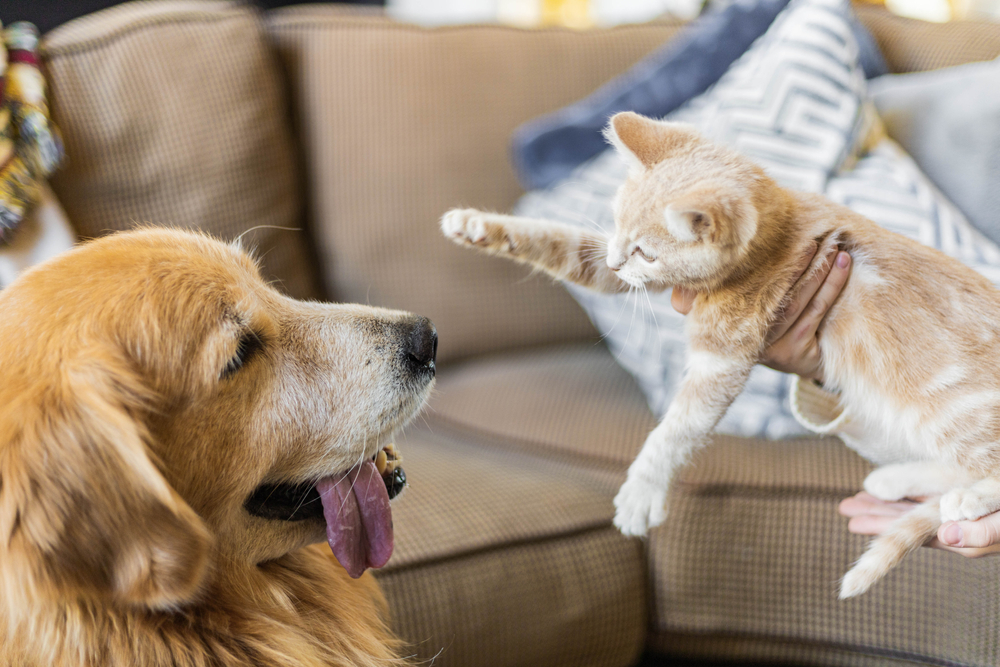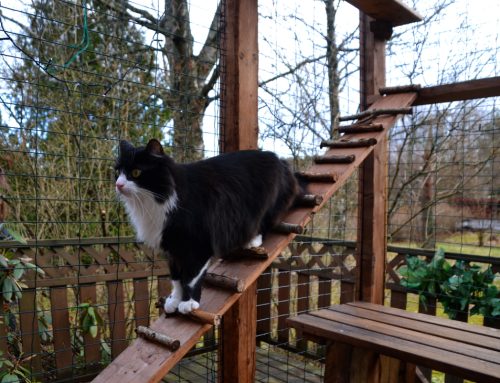Bringing home a new pet is an exciting time, but they need to be introduced to your household appropriately, so they and your other household members can adjust to the new situation. Our team at Cary Street Veterinary Hospital offers advice to help you introduce your new pet to your household, to ensure the process goes smoothly.
Initial steps before introducing a new pet
Before adopting a new pet, ensure your family has the necessary time to devote to a new pet, and consider your other household pets. Will they get along with another pet? If so, what kind of pet will most likely fit into your lifestyle? What age pet would be most appropriate for your household? You should consider all these questions before adopting a new pet.
Once you have decided that a new pet is a good idea for your family, prepare for the pet before bringing them home. Purchase all the necessary items your pet will need (e.g., their own food and water bowls, toys, bedding) before their arrival. Cats will also need their own litter boxes and scratching posts. Having everything in place will help facilitate the transition.
Introducing your new dog to your resident dog
How dogs interact when they are first introduced can set the tone for their entire relationship. Introducing dogs is best when each dog is handled by a different person, with the dogs kept leashed. Make the introductions go well by following these steps:
- Neutral territory — Start outdoors in a park, open field, or quiet street, and walk the dogs separately at a distance, where they can see each other but not interact. Treat the dogs when they look at the other dog. Walk until they are no longer focused on each other. Gradually move closer, until the dogs ignore each other when the humans are walking next to each other. This may take several sessions.
- Greetings — Once you can consistently walk, allow the dogs to circle and sniff each other, leading them away after a few seconds. When they are relaxed around each other, you can let them loose in a fenced area, but be prepared to intervene if necessary.
- Homecoming — When bringing the new dog in the house, remove all bones, toys, and food bowls for the initial interactions. Supervise all their interactions, giving them breaks from each other by crating one, or taking them for separate walks. Separate them when you leave the house, until they are comfortable around each other.
- Altercations — If an altercation occurs, separate them for a few days, and then gradually re-introduce them.
Introducing your new cat to your resident cat
Cats are extremely territorial, and often require weeks or months to adjust to a lifestyle change. Cats should not be introduced too quickly, to help them accept each other. Steps include:
- Separation — Keep your new cat in a separate room that has all their necessities.
- Exchange scents — Exchange your resident cat’s bedding with your new cat’s bedding, to get them used to each other’s scent.
- Mealtime — Feed your cats on either side of the door of your new cat’s room.
- Explore — Once your new cat seems comfortable in their new environment, sequester your resident cat in another room, and allow your new cat to explore the house.
- Greetings — Allow your cats to meet without being able to physically interact. Stacking two baby gates in a doorway is a good way to handle this situation. Do not put your cats in carriers for this step, because they will feel trapped, and may panic.
- Physical interaction — Once the cats are comfortable interacting through a barrier, free them to interact physically. Supervise their time together until they are comfortable.
- Altercations — If altercations occur, separate them, and start the process over, taking each step more slowly.
Introducing dogs and cats
Dogs and cats must be introduced slowly, and you must be able to read their body language to know when they are frightened or upset. Steps include:

- Separation — Confine your new pet in a designated room, providing the necessary items.
- Exchange scents — Exchange your new pet’s bedding with your resident pet.
- Explore — Confine your resident pet, and allow your new pet to explore.
- Mealtimes — Feed your pets on either side of your new pet’s door.
- Controlled meeting — Once your pets are comfortable eating on opposite sides of the door, allow them to meet. Keep your dog on a short leash, and have someone else bring your cat to the room, but do not restrain them. Keep your dog and cat on opposite sides of the room, and offer them treats. You can also offer your cat catnip. Repeat this several times, until your pets show no fear or aggression.
- Free your cat — Next, allow your cat to freely move around the room, still keeping your dog leashed. Allow them to interact, so long as your cat does not seem afraid, and your dog is not aggressive.
- Supervise — Supervise all interactions between your pets until they are comfortable with each other.
First impressions go a long way toward making your pet’s relationship pleasant. Ensure you introduce them appropriately, to help this process go smoothly. If you are bringing home a new pet, contact our Fear Free team so we can meet your new addition, and ensure they are happy and healthy.








Leave A Comment